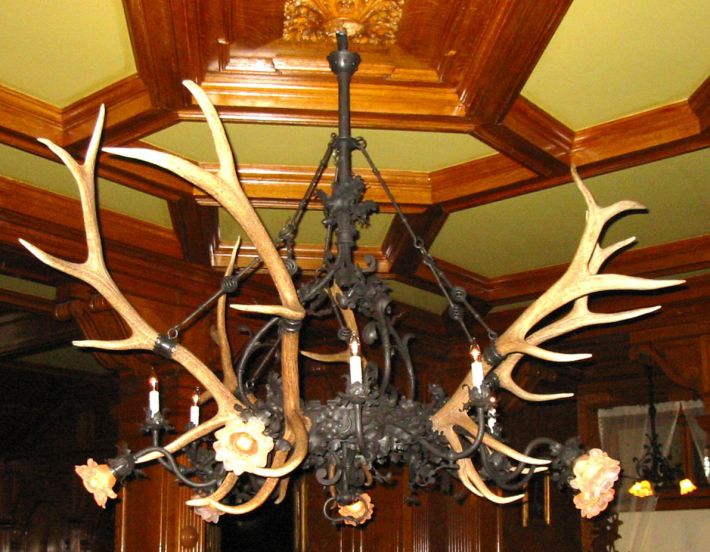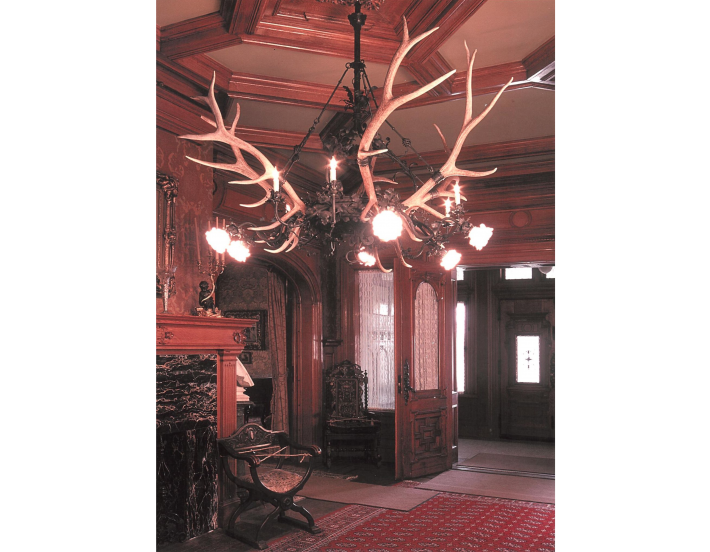Elk Antler Chandelier
This is a reproduction of the original chandelier made by the famed Austrian-born master blacksmith, Cyril Colnik. This Flemish Renaissance mansion was completed in 1892, and it was fitted with many lighting fixtures that were both natural gas and electric, as electricity was rather new, and often unreliable. The mansion was purchased by the Catholic Archdiocese in 1908, and served as the residence of the archbishop. During the next 67 years, many elements of the mansion were removed and sold; one of which was the original foyer chandelier, purchased by what is now called “Von Trier”, a German style cocktail lounge. The mansion was purchased in 1975 with the intent to restore it to its original splendor, and open it to the public for tours. Even though I did not design this piece, I consider it to be my masterpiece, and one of the most challenging pieces I have created thus far in my career. (Lottermoser image)
Home to Milwaukee's pioneer brewing family and five archbishops, the Captain Frederick Pabst Mansion, located in Milwaukee, Wisconsin, is being restored to its original splendor.
Related Posts
Forged Lighting and Candlesticks by Dan Nauman
- February 26, 2014
- Lighting, Liturgical
Colnik Grille Restoration
- January 13, 2010
- Repoussé, Restoration
Cyril Colnik Outdoor Ironwork II
- December 29, 2009
- Master Blacksmiths

